Diversity Lesson Plan

Lesson Plan Mindmap for Diversity ” Click to Enlarge
CLICK ICONS TO JUMP DIRECTLY TO EACH SUBJECT ON THIS PAGE








DIVERSITY LESSON PLAN
This page is a free-shared lesson plan archive for teaching all educational subjects within the context and theme of “Diversity”. It is purposed for use in community education environments, homeschool environments, traditional schooling environments, or as a supplemental and fun addition to any education program. As part of the complete Education for Life Program, this lesson plan is specifically designed to work in conjunction with the other components: Foundations of Teaching, Curriculum, Teaching Strategies, Learning Tools and Toys, Evaluation Model, and The Ultimate Classroom. If you’d like to learn how all these components work together, click here. Click here for the specifics focused on just using the lesson plans:
CLICK HERE FOR A DETAILED TUTORIAL ON HOW TO USE THIS LESSON PLAN
NOTE: The colors are provided as a possible linear progression (red/easiest to violet/most challenging) for people that might prefer a more linear structure. Our core philosophy, however, is that through creativity every color can be made easy or challenging for any learning level.
RELATED PAGES (mouse-over for descriptions and click for complete pages)
EDUCATION OVERVIEW | HOW TO USE THIS COMPONENT | OUR OPEN SOURCE PURPOSE
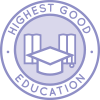
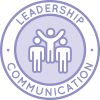
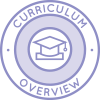
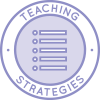
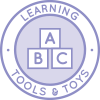
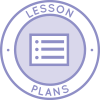
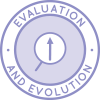
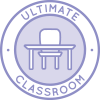
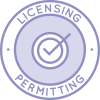

WAYS TO CONTRIBUTE TO EVOLVING THIS EDUCATION PROGRAM WITH US
SUGGESTIONS | CONSULTING | MEMBERSHIP | OTHER OPTIONS
A NOTE ABOUT ALL ONE COMMUNITY LESSON PLANS
The One Community lesson plans are intentionally designed for use in ANY educational environment and with ALL educational, cultural, religious/spiritual, and philosophical approaches to teaching and learning. They are designed without an ideological approach and specifically so they can be adapted to include the views, preferences, methodologies, and/or ideologies preferred by different parents and teachers.
For maximum flexibility and adaptation, they are also designed to be combined to teach multiple subjects at the same time. Doing this increases the creativity, effectiveness, and fun of your learning environment. Once we are on the property and operating our version of the complete school and Education for Life program, we will be adding video examples of how to combine the lessons. In the meantime, visit the Teaching Strategies page for a list of suggestions.
ARTS AND TRADES
CLICK HERE FOR THE COMPLETE SUBJECT OUTLINE FOR ARTS & TRADES
 | TEACHING ARTS AND TRADES WITHIN THE CONTEXT OF DIVERSITY |

| The Arts- Listen to music from at least 3 different cultures and discuss* the differences and similarities in the rhythms.
- Draw a picture* that represents what diversity means to you.
- Paint a picture* with symbols from 5+ different belief systems.
- Participate in a dance class* and learn and perform* 3+ dances from around the world.
- Create a three dimensional project* that represents your understanding of diversity and stirs a response in others when they view it. Display* it in a public space and have a response box for people to write comments after they experience it.
- Research modern day artists committed to any type of diversity equality. Use their work to inspire you and create a piece* that reflects your feelings on diversity and equality. Display* your work and include a brief description of your inspiration and intention, placing it for people to read after viewing your piece. Include an area for people to publicly display their diverse comments and interpretations of your work.
- Create a mosaic* that depicts a diversity of cultures and ideas. Display* it in a populated area where it will get many views by a diverse population. Put a response journal/board near the piece for people to record their feelings of and thoughts on the experience they had in viewing it.
|

| Trades- Explore the outdoor environment near your home or study place. Notice the diversity in nature and in man-made materials there, and discuss* what you see with your family, giving 5 examples of each.
- Research an encyclopedia or other similar resource for clothes from 3-5 different cultures. Sew a doll’s outfit* from a culture different than your own.
- Take photographs* of twenty things that represent what diversity means to you. Title each picture with a name that conveys your feelings.
- Within 3 trades in the green section of the molecule, research the relevance (if any) of diversity, and write a two page essay* on your findings, including your personal opinions.
- Do academic research and generate a list of 30+ qualities you believe a teacher or coach should possess in relation to diversity. Observe 5 teacher/coaches in your community and rank them on their demonstration of each of those qualities, writing a one page summary of your experience and observations of each in a way that is intended to help them and their students. Discuss your list and findings with each individual and share* what you observed and any ideas you have for them.
- Research ways to incorporate diversity in the workplace, and then create and give a presentation* on this. Videotape* your presentation and free share it on the internet.
- Create a course* on diversity in the workplace. Invite several leaders of a variety trades to participate in it. Send the participant’s home with a checklist for implementation and a response card to give feedback on how your advice works when they apply at their workplaces. Request them to send you back the response card so you can improve on the presentation and then offer the course again.
|
| CLICK HERE TO EMAIL US IF YOU HAVE AN IDEA TO ADD TO THIS SECTION |
* Please note that anything with an asterisk is just a suggestion. The diversity of options with asterisks are interchangeable and purposed to stimulate your own ideas. Any one of these suggestions could be replaced with a written paper, any form of art project (drawing, painting, music, paper mache, clay, wood, knitting/embroidery, metals, etc. etc.), an experiment, a presentation, a mindmap, a computer program, a web design project, a piece of poetry or a song, an interpretive dance or play, a group project, or anything else. What we feel is most important is that both the Learner and the Teacher agree on an exercise/activity they both feel would be maximally engaging, fun, and effective. If you come up with an idea we haven’t already thought of, please share it with us.
ENGLISH
CLICK HERE FOR THE COMPLETE SUBJECT OUTLINE FOR ENGLISH
Note: Any language can be substituted for English. The subject is listed here as “English” because that is the primary language of most of the people on the team, and the official language of the country we’re building our initial location in.
 | TEACHING ENGLISH WITHIN THE CONTEXT OF DIVERSITY |

| - With the help of a parent or guardian, recite the alphabet adding a diversity related word* after each letter, using the internet to help you find words as needed (e.g. A is for age, B is for boy, C is for culture).
- Find 5 pictures* that represent diversity and write a diversity word to match each picture.
- Write a speech* about diversity within your community and then present it at a community meeting.
- Read and review 3 books* on gender and sexual diversity. Write at least 2 pages* for each book, focusing on how the literature expresses/relates to diversity issues and include potential real world applications/instances of concepts you read in each.
- Write and produce a short dialog play* about a “difficult” diversity subject. Videotape and share it on social media.
- Create a crossword puzzle* of diversity related words. Free share your puzzle.
- Write a thesis* about diversity and implement your ideas in a real life setting. Keep written records of how the implementation of your diversity ideas unfold. Open source your paper and then the results.
|
| CLICK HERE TO EMAIL US IF YOU HAVE AN IDEA TO ADD TO THIS SECTION |
* Please note that anything with an asterisk is just a suggestion. The diversity of options with asterisks are interchangeable and purposed to stimulate your own ideas. Any one of these suggestions could be replaced with a written paper, any form of art project (drawing, painting, music, paper mache, clay, wood, knitting/embroidery, metals, etc. etc.), an experiment, a presentation, a mindmap, a computer program, a web design project, a piece of poetry or a song, an interpretive dance or play, a group project, or anything else. What we feel is most important is that both the Learner and the Teacher agree on an exercise/activity they both feel would be maximally engaging, fun, and effective. If you come up with an idea we haven’t already thought of, please share it with us.
HEALTH
CLICK HERE FOR THE COMPLETE SUBJECT OUTLINE FOR HEALTH
 | TEACHING HEALTH WITHIN THE CONTEXT OF DIVERSITY |

| - Discuss* with a family member what it means to be socially healthy in your community and how that is the same and/or different from socially healthy in other communities.
- Develop a list* of 5 diverse ways you like to stay healthy, and choose a word to describe* what makes each special to you.*
- Read 3 books about the different types of connections between people and write a 1-2 page report* about diversity and connection.
- Develop a physical fitness plan* that is based on diversity and is healthy for your whole body. Practice this plan daily for a week and record your physical and emotional reactions and/or changes that occur.
- Record how you maintain life balance, using time management skills and setting priorities. Choose 3 other people who seem to you to be very different from yourself and from each other, and interview them about how they maintain life balance. Then write a comparative essay* on the diverse methods you uncover and their seeming effectiveness. Free share your report.
- Do an in depth study on the diverse religions of the world listed in the indigo section of the molecule. Create a visual representation* of the information you discover. Display your project in an area where many people will see it.
- Study the diverse ways cultures engage in physical activity around the world. Share the socio-cultural information on physical activity and health you find by video recording a presentation* on the variety of approaches to health and physical activity and the way these approaches impact individuals, the cultures and all of humanity.
|
| CLICK HERE TO EMAIL US IF YOU HAVE AN IDEA TO ADD TO THIS SECTION |
* Please note that anything with an asterisk is just a suggestion. The diversity of options with asterisks are interchangeable and purposed to stimulate your own ideas. Any one of these suggestions could be replaced with a written paper, any form of art project (drawing, painting, music, paper mache, clay, wood, knitting/embroidery, metals, etc. etc.), an experiment, a presentation, a mindmap, a computer program, a web design project, a piece of poetry or a song, an interpretive dance or play, a group project, or anything else. What we feel is most important is that both the Learner and the Teacher agree on an exercise/activity they both feel would be maximally engaging, fun, and effective. If you come up with an idea we haven’t already thought of, please share it with us.
MATH
CLICK HERE FOR THE COMPLETE SUBJECT OUTLINE FOR MATH
 | TEACHING MATH WITHIN THE CONTEXT OF DIVERSITY |

| - Count* different quantities of 5 diverse objects, such as cotton balls, paper clips, marbles etc., and find 10 differences and 10 similarities* in the objects.
- Find 5 diverse liquids of the same volume and estimate their weight, then measure* each. Measure 5 solids to the same weight and estimate the volume of each, then measure it. Notice the differences.
- Come up with 4 multiplication and 4 division word problems* that have diversity as the theme in the question.
- Draw 5+ informal comparative inferences* about two populations with diversity as a component you are measuring.
- Research the extent to which diversity has any impact on geometric theorems. Write a 3+ paper* about your findings.
- Choose a bullet from the indigo section of the molecule and create a mathematical situation* where diversity has an impact on that particular math. Show your theory in a diagram that can be free shared.
- Conduct a study on teaching basic math to diverse populations. Write and publish a guide* based on your study on how to consider differences when introducing people to math. Give your guide to diverse learning environments and have them implement your ideas and then send you feedback of how your ideas work.
|
| CLICK HERE TO EMAIL US IF YOU HAVE AN IDEA TO ADD TO THIS SECTION |
* Please note that anything with an asterisk is just a suggestion. The diversity of options with asterisks are interchangeable and purposed to stimulate your own ideas. Any one of these suggestions could be replaced with a written paper, any form of art project (drawing, painting, music, paper mache, clay, wood, knitting/embroidery, metals, etc. etc.), an experiment, a presentation, a mindmap, a computer program, a web design project, a piece of poetry or a song, an interpretive dance or play, a group project, or anything else. What we feel is most important is that both the Learner and the Teacher agree on an exercise/activity they both feel would be maximally engaging, fun, and effective. If you come up with an idea we haven’t already thought of, please share it with us.
SCIENCE
CLICK HERE FOR THE COMPLETE SUBJECT OUTLINE FOR SCIENCE
 | TEACHING SCIENCE WITHIN THE CONTEXT OF DIVERSITY |

| Life Sciences- Cut out pictures of a diversity of plant life from magazines and make a poster* that sorts the plants by similarities.
- Draw a picture* that shows life in 3+ diverse environments.
- Write a 3 to 5 page report* about diversity in food chains and webs and include your opinion on why differences in life forms exists.
- Conduct an investigation* on diversity in cell characteristics. Create an open source infographic* of your results.
- Research the classification of living things and write an essay* about how diversity relates to classification. Publish your essay in a blog article on the internet.
- Define biodiversity and create a curriculum* that highlights the positive aspects of the field. Teach your course to a group of middle school age students and have them write evaluations of the course when they complete it.*
- Choose a life science field from the violet bullets. Write a curriculum or textbook* about diversity within that field. Use your materials in an age appropriate classroom setting and get feedback from the students.
|

| Physical Sciences- Collect a diverse selection of materials and then make a collage* with the variety of items.
- With an expert, discuss* three or more diverse uses of light.
- Find 3 experiments scientists have performed that demonstrate the idea of diversity in velocity and write a 1 page essay* describing the experiments and the findings.
- In a poster*, describe the diversity of the compounds in the Periodic Table. Hang your poster in a learning area of your community.
- Do a study* on the conservation of energy in diverse situations. Create a chart* that shows the different ways of the different methods of conserving energy. Free share your chart.
- Conduct an experiment* on momentum and diversity. Open source your experiment and findings.
- Choose a physical science field from the violet bullets and conduct an experiment* involving diversity and that subject. Open source the results.
|

| Earth Sciences- Draw a picture* of 5 diverse weather systems and put an emoji on each of how you feel about that type of weather.
- Create a 3d project* that shows diversity in the earth’s components, such as air,water and land.
- Write a factual 3 to 5 page report* about the diversity of planets in the solar system.
- Conduct an experiment* looking at the rock cycle and how diverse geographical changes affect climate and life and vice versa. Open source your results.
- Write a thesis* about fusion and diversity. Create an experiment to test your theory and free share the results.
- Study volcanoes in the context of diversity. Discover the extent to which differences in culture, climate, environment and other diverse factors influence a volcano. Give a report* on your findings and open source your results.
- Choose an earth science field from the violet section and create a panel discussion and presentation* on diversity within that field. Present to a group of professionals in that field and have them share ideas with each other in the panel discussion. Video the event and open source it on the web.
|
| CLICK HERE TO EMAIL US IF YOU HAVE AN IDEA TO ADD TO THIS SECTION |
* Please note that anything with an asterisk is just a suggestion. The diversity of options with asterisks are interchangeable and purposed to stimulate your own ideas. Any one of these suggestions could be replaced with a written paper, any form of art project (drawing, painting, music, paper mache, clay, wood, knitting/embroidery, metals, etc. etc.), an experiment, a presentation, a mindmap, a computer program, a web design project, a piece of poetry or a song, an interpretive dance or play, a group project, or anything else. What we feel is most important is that both the Learner and the Teacher agree on an exercise/activity they both feel would be maximally engaging, fun, and effective. If you come up with an idea we haven’t already thought of, please share it with us.
SOCIAL SCIENCES
CLICK HERE FOR THE COMPLETE SUBJECT OUTLINE FOR SOCIAL SCIENCES
 | TEACHING SOCIAL SCIENCES WITHIN THE CONTEXT OF DIVERSITY |

| - Discuss* the culture of your country with an adult, focusing on diversity.
- Explore children’s books* from 3 different cultures that are meant to teach different lessons/morals. Note* the differences and similarities and the qualities that make them diverse.
- Write a 2 page paper* about what culture is and the things that make it up. Focus on diversity within a culture.
- Make a presentation* about a time in history when diversity issues were very relevant. Open source video your presentation.
- Research diversity and the history of voting in your country and write a 5 page paper* about this. Include any aspects of diversity involved such as gender rights, race rights and/or religious rights. Publish and free share your paper.
- Make a project* that demonstrates the idea of inclusivity and respecting diversity. Display your project in a well travelled area where many people can see it and respond emotionally to it. Leave comment forms so the people can write how the piece made them feel.*
- Design a plan* for cities to implement that recognizes diversity on all levels without prejudice. Have your community implement the program and observe and record results. Free share the program and the benefits you find and problems you see, on the internet.*
|

| Foreign Languages
(Each of the following is to be completed in the foreign language(s) being studied)- Learn and use* words for different diversity related concepts.
- Read & write sentences* with words for diversity related concepts.
- Read stories* about ‘diversity’ in fiction pieces.
- Explore & create different types of short literature* in relation to diversity.
- Compose a new piece of literature* about diversity.
- Research and write about* the complete history of and writings about diversity words.
- Write a dissertation level paper* on diversity.
|
| CLICK HERE TO EMAIL US IF YOU HAVE AN IDEA TO ADD TO THIS SECTION |
* Please note that anything with an asterisk is just a suggestion. The diversity of options with asterisks are interchangeable and purposed to stimulate your own ideas. Any one of these suggestions could be replaced with a written paper, any form of art project (drawing, painting, music, paper mache, clay, wood, knitting/embroidery, metals, etc. etc.), an experiment, a presentation, a mindmap, a computer program, a web design project, a piece of poetry or a song, an interpretive dance or play, a group project, or anything else. What we feel is most important is that both the Learner and the Teacher agree on an exercise/activity they both feel would be maximally engaging, fun, and effective. If you come up with an idea we haven’t already thought of, please share it with us.
TECHNOLOGY AND INNOVATION
CLICK HERE FOR THE COMPLETE SUBJECT OUTLINE FOR TECHNOLOGY AND INNOVATION
 | TEACHING TECHNOLOGY & INNOVATION WITHIN THE CONTEXT OF DIVERSITY |

| Technology- With the supervision of a parent or guardian, find and use an app* that promotes diversity.
- Create a digital art picture* that represents an idea in diversity.
- Review 5 social media sites that either encourage or represent diversity. Include a short explanation* for each site about their diversity connection.
- Design a basic website* that defines and promotes an area of diversity. Free share your site on the internet.*
- Choose a system from the blue section of the molecule and write a blog entry* about diversity within that system. Free share your blog on the internet.*
- Develop a videogame* for young children that teaches about diversity. Test play your game amongst a diverse population and have the players fill out an evaluation form. Based on their responses, make any changes to the game and then open source* your product.
- Develop an app* that enhances the technological abilities of social media sites to encourage diversity amongst their followers. Have the companies try the app, and then evaluate* any changes and differences in diversity that occurred.
|

| Innovation- Create a type of imaginary play* with others that includes the idea of diversity.
- With an expert, come up with diverse strategies* for enhancing your personal mindset.
- Read 3 textbook chapters* about diversity in the field of psychology. Create a chart* that shows ways diversity is in the field of psychology.
- Find 3 diverse ways to learn and/or teach.* Learn the technique and the history behind it. Use each of those techniques for a week and then decide which works best for you. Write a short essay* about the technique you like best, the history behind it and why you think you like it the best.
- Research brain building activities and choose 3 of these activities that help a diverse audience and are cross-culturally effective. Summarize* each activity with an explanation how they each transcend diversity to help many humans. Free share your list on the web.
- Choose 5 of the innovators from the indigo section of the molecule as examples of role models of diversity in important fields and create a presentation* on the relevance of diversity to their success. Videotape and free share your presentation.
- Choose a company type from the violet section of the molecule and investigate how diversity plays a role in that field. Write a comprehensive report* on ways diversity is both positive and/or negative within that world. Open source your report.
|
| CLICK HERE TO EMAIL US IF YOU HAVE AN IDEA TO ADD TO THIS SECTION |
* Please note that anything with an asterisk is just a suggestion. The diversity of options with asterisks are interchangeable and purposed to stimulate your own ideas. Any one of these suggestions could be replaced with a written paper, any form of art project (drawing, painting, music, paper mache, clay, wood, knitting/embroidery, metals, etc. etc.), an experiment, a presentation, a mindmap, a computer program, a web design project, a piece of poetry or a song, an interpretive dance or play, a group project, or anything else. What we feel is most important is that both the Learner and the Teacher agree on an exercise/activity they both feel would be maximally engaging, fun, and effective. If you come up with an idea we haven’t already thought of, please share it with us.
VALUES
CLICK HERE FOR THE COMPLETE SUBJECT OUTLINE FOR VALUES
 | TEACHING VALUES WITHIN THE CONTEXT OF DIVERSITY |

| - Make a new friend who is very different than you. Talk* to them about how you are both the same and how you are different.
- Create a puppet show* with puppets representing diverse characters who get along with each other.
- Create a project* that shows the importance of respect and acceptance amongst diverse people.
- Write a 3 to 5 page paper* about how people can be attentive to diversity issues.
- Visit or watch videos about 3 places where people of a different culture live. Observe and/or interact with them and then write a diversity essay* about at least 10 similarities and 5 differences between their ways and your community’s ways.
- Create a curriculum* about diversity for a specific age group. Find a willing learning center to implement your program. Have families, teachers and administrators at the school write evaluations of the program.
- Design and develop a program for diversity training* in new communities. Find 2 new communities to share your program with. Videotape the presentation* and free share it on the internet. After the communities implement your program, revisit them and, with their feedback, evaluate any diversity results that have occurred since your presentation. Request any communities who implement the program from your recording to also share any results they notice, and add the feedback/results to your recording.
|
| CLICK HERE TO EMAIL US IF YOU HAVE AN IDEA TO ADD TO THIS SECTION |
* Please note that anything with an asterisk is just a suggestion. The diversity of options with asterisks are interchangeable and purposed to stimulate your own ideas. Any one of these suggestions could be replaced with a written paper, any form of art project (drawing, painting, music, paper mache, clay, wood, knitting/embroidery, metals, etc. etc.), an experiment, a presentation, a mindmap, a computer program, a web design project, a piece of poetry or a song, an interpretive dance or play, a group project, or anything else. What we feel is most important is that both the Learner and the Teacher agree on an exercise/activity they both feel would be maximally engaging, fun, and effective. If you come up with an idea we haven’t already thought of, please share it with us.
OTHER RESOURCES
We're building a resource section. Click here if you have a suggestion or resource for this page.
OPEN SOURCE SUBJECT RESOURCES (click icons for complete pages)



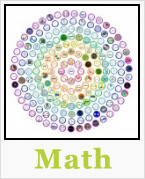



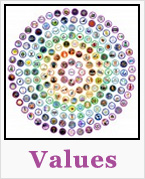
OPEN SOURCE CURRICULUM OUTLINES (click image for summaries and links to complete pages)
CARE
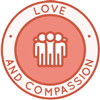
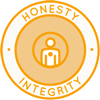
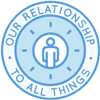
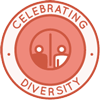
SHARE
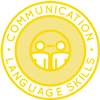
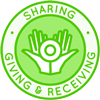

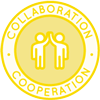
PLAY
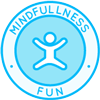
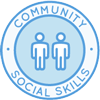
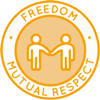
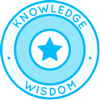
OPEN SOURCE TEACHING METHODOLOGY SUMMARIES
Montessori | Waldorf | Orff | Reggio | Multi-Intelligence | Bloom's Taxonomy | Study Tech | I-WE
INDEX OF ALL THE ONE COMMUNITY OPEN SOURCE LESSON PLANS

Click this image for the Lesson Plans for Life page with links to the rest of the lesson plans
THE WORLD'S LARGEST ONLINE FREE EDUCATION RESOURCE ARCHIVE
RELATED CONTENT AND OTHER RELATED RESOURCES
We're building this resource section. Click here if you have a suggestion or resource for this page.
























 One Community
One Community




